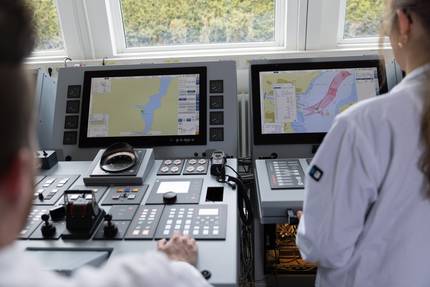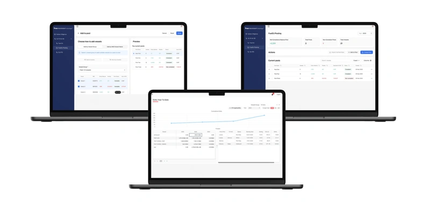How FLNG Tech Supports Energy Transition
Fast-growing energy demand is driving the need for technical support and guidance in new locations, writes Terrance Roberts, Manager, Global Business Development, ABS.
Surging appetite for natural gas is accelerating the development of global and regional supply chains, with established producers seeking new markets and emerging suppliers looking to meet demand from local consumers.
Long-tabled export projects are being fast-tracked for approval in North America while new facilities are under development in Canada and South America. However emerging markets in demand centres across Asia and elsewhere are also looking to rapidly increase production.
For countries seeking to access remote reserves and lacking highly developed infrastructure, demand for Floating LNG is expected to increase its market share as producers seek to capture new opportunities.
As the trend develops, the impetus will be on class societies and regulators to ensure the increase in production capacity is managed safely and efficiently.
Supply and Demand
Increasing supply of LNG in North and South America is pushing long-tabled export projects closer to final investment decision. Meanwhile demand growth spans Europe and Asia but also extends to other markets.
The need to increase supply due to geopolitical conflicts in the area has made Europe an attractive destination for LNG suppliers, encouraging project developers who want to meet this demand sooner rather than later.
This structural shift has intensified competition for LNG cargoes, impacting the dynamics of demand between Europe and Asia. A complex combination of price fluctuations, energy policies and the need for supply diversification will help shape this trajectory in future.
Extreme weather is also impacting supply and demand, exemplified by droughts in South America in 2024, which saw LNG imports spike, affecting annual imports with a knock-on effects to global balances, helping to propel LNG prices to an all time high, according to IEA data.
As the needs of these importers continue to mature, other markets are expected to grow and others emerge as the second half of the decade progresses.
China remains the largest importer of LNG, though there is some uncertainty as to how tariffs will impact this. India is also increasing its exposure to LNG imports, with energy companies recently announcing offtake agreements.
Other potential markets that are seeing growth are in Southeast Asia, including Thailand, Vietnam and the Philippines, which are expanding their infrastructure to meet energy demands. Among the big unaddressed questions is whether Africa can emerge as a serious contender, in either regional import or export markets.
New Facilities
A combination of policy changes and expectations of an accelerated approval process has prompted established developers to talk of ramping-up LNG export projects, with facilities getting the green light as finance becomes available.
Projects will each take a unique approach to funding, relying on a combination of equity investment, bank debt and other options. The finance community backing US projects are less likely to be constrained by withdrawal of funding for LNG projects or requirements to meet strict environment, social and governance credentials.
This could lead to faster funding rounds or loans based around achieving export targets that the US government wishes to see.
Among the projects to have benefitted from this change - Venture Global CP2, Woodside LNG, Glenfarne Texas LNG and Next Decade Rio Grande Expansion - are slated for first gas production from 2026. By 2028 they could be providing an additional 63 mtpa into international markets. Current demand is around 475 mtpa, which is expected to grow to around 670 mtpa by 2028, according to the Global LNG Outlook 2024-2028, published by the Institute for Energy Economics and Financial Analysis.
However production developments in new markets will face different challenges in terms of infrastructure and project finance. Capacity remains limited in some countries, with congestion causing long wait times for LNG vessels in addition to pipeline issues and storage constraints.
Floating Advantages
Floating LNG has specific advantages in this context. First, it allows developers to access remote reserves that may be unreachable for traditional facilities and second it enables faster development. In cases where onshore gas is not present in high enough quantities to warrant a traditional onshore liquefaction facility, FLNG capacity to scale to provide an opportunity to monetise these resources.
An FLNG facility can be deployed a lot more quickly than an onshore facility. This has the potential to shorten the return on investment cycle, which could lead to accelerated funding approvals, with reduced environmental impact making it easier to get required regulatory approval, all of which make these projects potentially more attractive to investors.
The ultimate ambition would be to develop plug and play solutions and FLNG has the potential to bring LNG export capabilities to a region quickly and with the most viable business case.
Their combination of greater mobility, higher energy efficiency compared to onshore facilities and modular construction means a facility can be built and shipped from one location rather than relying on a more diverse supply chain for onshore construction.
Impacts on Safety
Of significant interest to class is the impact this rapid change may have on the evolution of rules, regulations and technology behind FLNG newbuilds and particularly on conversions.
The potential growth in new FLNG projects in developing markets places a number of first-of-their-kind projects in locations with no previous operational experience with the applicable rules and regulations for this technology.
Projects classed by ABS include innovative and novel concepts, thus prompting close attention from regulatory authorities which have not worked with these types of projects.
ABS can help project developers present their case with appropriate risk and impact mitigations which will help to streamline the project approval process. With years of experience of being ‘first-to-market’ with FLNG projects, ABS can draw on this expertise to assist project developers.
ABS has experience supporting some of the industry’s most complex FLNG projects working directly with clients and the authorities responsible for regulating these projects. In both cases we provide design approval and certification as well as providing guidance on rulemaking for regulators and training for personnel. About the Author: Terrance Roberts, ABS,serves as Global Business Development Manager, Global Offshore, FLNG, focusing on capturing opportunities in the fast-paced FLNG market, by supplying critical risk mitigation guidelines to potential project developers, ensuring their projects adhere to industry regulatory codes and standards.
About the Author: Terrance Roberts, ABS,serves as Global Business Development Manager, Global Offshore, FLNG, focusing on capturing opportunities in the fast-paced FLNG market, by supplying critical risk mitigation guidelines to potential project developers, ensuring their projects adhere to industry regulatory codes and standards.

















